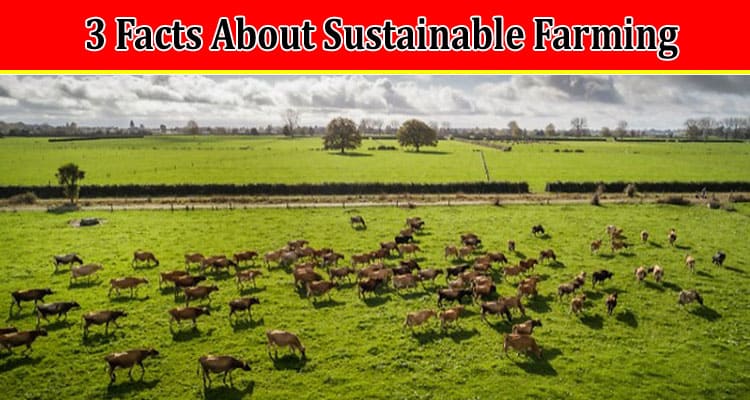Sustainable farming practices allow consumers and producers to work together to create a healthier, cleaner environment. They use alternative methods for pest control, irrigation, and fertilization. Here are facts about how sustainable practices can help the environment:
Soil Health Matters
Healthy soil contains the nutrients plants need to grow. Techniques such as crop rotation, cover cropping, and organic fertilizers enhance soil fertility and prevent erosion, contributing to long-term productivity. Here’s a deeper look at how these methods work:
Crop Rotation
Crop rotation is a practice where different crops are grown on the same plot of land in a planned sequence over several seasons or years. This practice can enhance soil fertility and disrupt the lifecycle of pests, diseases, and weeds.
Different crops have varying nutrient requirements and contribute distinct benefits to the soil. Legumes can fix nitrogen from the air into a form that plants can use, replenishing nitrogen levels in the soil. Following legumes with a nitrogen-loving crop, such as corn, can take advantage of this natural nitrogen boost.
Cover Cropping
Cover cropping involves growing specific plants primarily for the benefit of the soil rather than crop yield. Clover or rye can act as cover crops, providing multiple benefits for soil health. Cover crops can protect the soil surface, reducing erosion by water or wind. Their roots can help to maintain or improve soil structure, promoting better water infiltration and reducing runoff.
Organic Fertilizers
Organic fertilizers derived from plant or animal sources can significantly enhance soil fertility. They provide a broad spectrum of nutrients that plants require, improve the soil’s structure, and increase its ability to hold water and nutrients.
Water Conservation
In sustainable farming, water conservation is a priority. Two techniques commonly used to conserve water are drip irrigation and rainwater harvesting.
Drip Irrigation
Drip irrigation involves taking water directly to the root zone of plants. This can be achieved through a network of valves, pipes, tubing, and emitters. By directing water precisely where it’s needed, drip irrigation can reduce the amount of water wasted through evaporation or runoff.
Drip irrigation can also enhance crop health and yield. Plants can absorb water more efficiently when delivered directly to their roots, reducing stress and promoting healthier growth. Because the surface of the soil remains relatively dry, the growth of weeds can be inhibited, reducing the need for herbicides.
Rainwater Harvesting
Rainwater harvesting involves collecting and storing rainwater for later use, typically in a tank or pond. The collected rainwater can irrigate crops, reducing dependence on groundwater or surface water sources. Rainwater harvesting can provide a reliable water source during dry periods in areas with irregular rainfall.
This technique can help control runoff and prevent soil erosion by slowing down the flow of rainwater. It can also reduce the risk of flooding and recharge groundwater levels.
The Impact of Sustainable Farming
Sustainable agriculture practice is a transformative approach that seeks to balance the need for food production with environmental preservation and resource efficiency. Here are the effects of sustainable farming:
Sustainable farming has a positive impact on the environment. It helps to mitigate climate change, protect water sources, and support wildlife habitats by enhancing soil health, conserving water, and preserving biodiversity.
Foods produced using sustainable methods could be more nutritious, as healthy soils have nutrient-rich crops. By minimizing synthetic pesticides and fertilizers, sustainable farming can reduce exposure to potentially harmful chemicals.
Embrace Sustainable Farming
Sustainable farming is not just an alternative method of agriculture; it’s a necessity for our planet and our future. By understanding and embracing its principles, you can contribute to a more sustainable and resilient food system.





